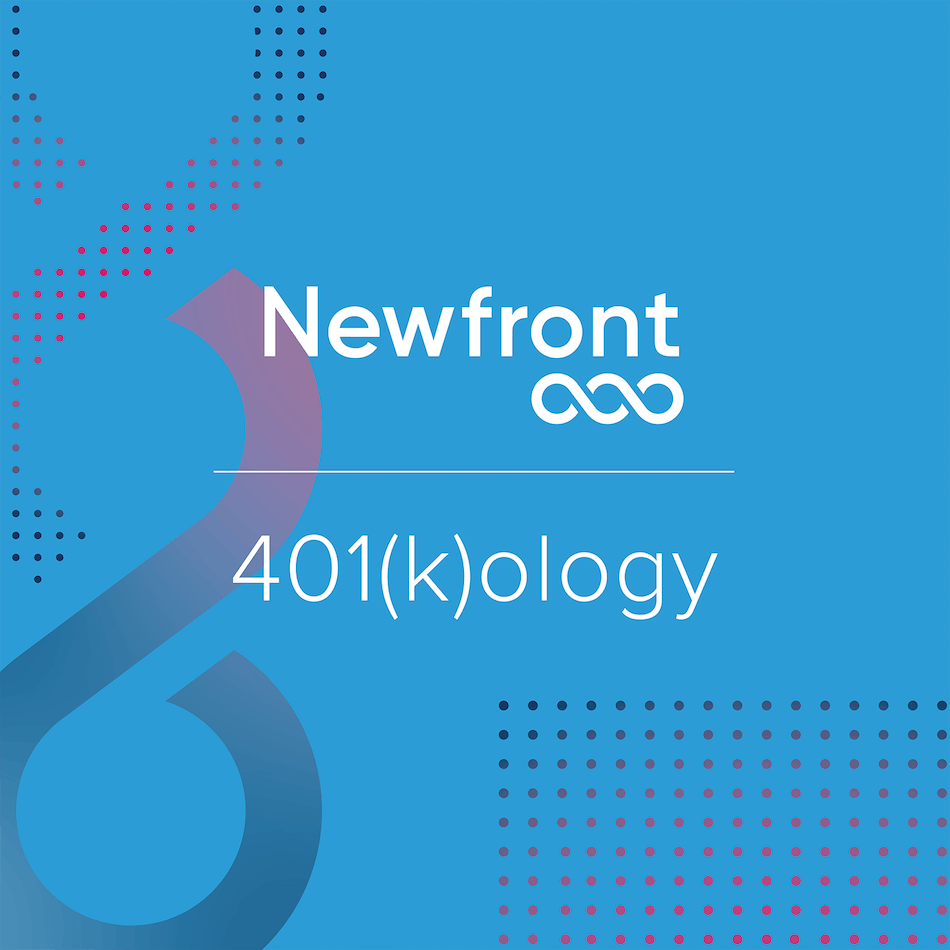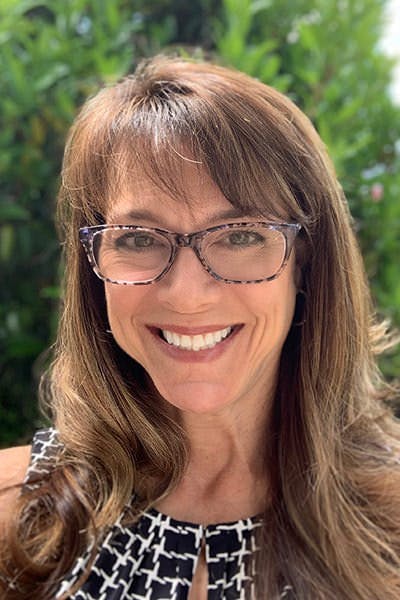401(k)ology – Safe Harbor 401(k) Plans
By Joni L. Jennings, CPC, CPFA®, NQPC™ | Published July 14, 2022

A safe harbor 401(k) plan is a type of retirement plan that provides a “free pass” on the annual non-discrimination testing that measures average deferral rates among your employees and, in some cases, a “free pass” on additional discretionary matching contributions. If your plan is top-heavy (more than 60% of the assets in the plan are owned by key officers and owners), a safe harbor 401(k) may also be exempt from required top heavy minimum contributions.
Free is relative, as the cost of a safe harbor 401(k) plan is the required employer contribution with 100% immediate vesting.
What Are the Main Benefits of a Safe Harbor 401(K) Plan?
1. Safe Harbor Plans Do Not Need to Pass ADP/ACP
The primary benefit of a safe harbor 401(k) plan is that the plan is deemed to satisfy the Average Deferral Percentage (ADP) Test. The ADP Test is performed annually to ensure that the Highly Compensated Employees (HCEs) are not disproportionately deferring at a greater rate than the Non-Highly Compensated Employees (NHCEs). If that test fails, HCEs may get a refund of their deferrals.
Note: HCEs are more than 5% owners (including their spouses and lineal ascendents/descendants) and any employee who had gross compensation in excess of the dollar threshold ($130,000 for 2021 and $135,000 for 2022, indexed with cost-of-living adjustments). The compensation limit is applied in the 12 months before the plan year being tested. For example, an employee who had compensation in excess of $130,000 in 2021 is an HCE for 2022. A NHCE is anyone who is not an HCE.
2. Safe Harbor Plans Can Avoid Top-Heavy Rules
The secondary benefit of safe harbor status is that it provides an exemption from the top-heavy rules as long as the plan consists solely of elective deferrals and safe harbor contributions (matching or nonelective). Plans that fail the top-heavy test are referred to as “top-heavy plans.” These top-heavy plans generally require a 3% employer contribution to all non-owner, non-officer participants who are still actively employed on the last day of the plan year, regardless of hours worked in the plan year. Employers taking advantage of safe harbor status can avoid this cumbersome requirement, which can even benefit participants who would not otherwise be eligible for any employer contribution.
Now you know the benefits of a safe harbor plan, so the next step is determining what formula works best for your company.
What Are the Most Common Safe Harbor Matching Contribution Formulas?
These are the two most widely used formulas:
**Basic Safe Harbor Match **– This formula has two tiers. The first tier is 100% of deferrals on deferrals up to 3% of compensation, plus the second tier of 50% of deferrals on deferrals between 3% to 5% of compensation. An employee who defers 5% of compensation will receive a 4% match.
Enhanced Safe Harbor Match – This formula provides a 100% match on the first 4% of compensation an employee defers. An employee who defers at least 4% of compensation will receive a 4% match, but an employee who defers 3% will only receive a 3% match.
The safe harbor match formulas only benefit eligible employees who make salary deferral elections. The difference between the safe harbor match and the safe harbor nonelective (SHNEC) formula is that the 3% SHNEC is provided to all eligible employees, regardless of any deferral elections.
What Are the Basic Requirements of a Safe Harbor 401(K) Plan?
Safe harbor 401(k) plans have three basic requirements:
The company is required to make contributions to NHCEs
The company is required to comply with specific safe harbor annual notice requirements
The plan amendment adopting a safe harbor provision generally must be executed before the beginning of the plan year in which the safe harbor applies, with restrictions on the ability to amend the plan during the plan year. A “plan year” is defined as a full 12-month period (exceptions may apply for new plans and terminating plans).
Can Safe Harbor Plans Include Automatic Enrollment?
Absolutely! If you want to include, or already have, an automatic enrollment provision in your 401(k) plan, you can maintain or add this feature on top of the safe harbor 401(k) plan. A safe harbor 401(k) plan with automatic enrollment is referred to as a Qualified Automatic Contribution Arrangement (QACA) and the benefits include a reduced match formula and a modified vesting schedule.
Newfront has created a Safe Harbor Guide that includes summary chart that includes common elements of safe harbor 401(k) plans; those that do and do not include automatic enrollment features.
Are There Additional Plan Design Opportunities You Can Implement in Tandem with a Safe Harbor 401(K) Plan?
Indeed! In addition to automatically passing the ADP test, there are many additional benefits to enjoy as a safe harbor 401(k) plan. Below are a few examples of additional plan design structures that you can layer on top of, or in tandem with, your safe harbor 401(k) plan:
**Additional Company Matching Contributions **– Hello, “Triple Stack Match”!
Sounds like something you would order with syrup on top, but the triple stack match is just as yummy for the right company demographics. This is how the triple stack match works:
1st stack - Safe harbor match (either formula from above), plus
2nd stack - Fixed match (capped at deferrals up to 6% of compensation), plus
3rd stack - Discretionary match (cannot exceed 4% of compensation).
The triple stack match can provide a total match of 12% of compensation and does not require discrimination testing. For example:
Compensation - $305,000
Deferrals - $20,500
Deferral Percent – 6.72% ($20,500/$305,000)
Match Stack 1 - $12,200 ($305,000*4%)
Match Stack 2 - $12,200 ($305,000*6%*66.67%)
Match Stack 3 - $12,200 ($305,000*4%)
For stack 2, the fixed match would equal 66.67% of deferrals up to 6% of compensation (equals 4% if you defer at least 6%). Better than pancakes!
Additional Profit Sharing paired with 3% SHNEC
This option does require some additional testing, but it can be very useful if you have older owners with a younger staff. The two most common pairings are either:
The 3% SHNEC to all eligible employees plus 6% profit sharing only to the owner (owner gets 9%); or
The 3% SHNEC to all eligible employees, up to 2% profit sharing to NHCEs and maximize the owner up to $61,000 (including deferrals).
This design is commonly referred to as either a cross-tested or new comparability allocation formula. While there are special rules that apply to this design, the 3% SHNEC provides a free pass on the deferral test and gets counted again in the additional profit-sharing test.
That’s awesome – wait there is more? YES!
Allow Participants to Save Even More in Their 401(k) - Welcome “After-Tax Contributions!”
Separate from Roth contributions, after-tax contributions with in-plan Roth conversion (aka “MEGA-backdoor Roth”) allow participants to save even more into their 401(k) plan up to the annual individual contribution limit, which in 2022 is $61,000 (or $67,500 if age 50+).
For the purposes of non-discrimination testing, employee after-tax contributions are tested in the Average Contribution Percentage (ACP) Test, and are categorized the same as employer matching contributions
After-tax contributions may be added to the safe harbor matching contributions (or a portion of the safe harbor match) to demonstrate that the plan satisfies the ACP Test.
Note: The ACP Test mechanics are the same as the ADP Test, just using match instead of deferrals. Each participants’ safe harbor match plus the after-tax contributions are divided by compensation to determine their average, then the participants are grouped by HCEs and NHCEs and an average rate determined for each group. The purpose is the same, to ensure that the contributions for the HCEs are not disproportionately greater than the NHCEs.
Depending on the size of your company, the demographics of HCEs versus NHCEs, and your commitment to required contributions, a safe harbor 401(k) plan can provide opportunities to avoid testing and can increase benefits to targeted employees.
When Can You Change Your Plan to Be a Safe Harbor 401(k) Plan?
In order to be a safe harbor 401(k) plan, you will need to amend the plan document. The deadline for the amendment will depend on whether you wish to utilize the safe harbor matching or the SHNEC.
Safe Harbor Match – Given the match is dependent on deferrals and a safe harbor 401(k) plan must be in effect for 12 months (with limited exceptions for a newly established plan), an existing 401(k) plan can only add the safe harbor match prospectively. For example, an existing 401(k) plan with a January 1, 2022 to December 31, 2022 plan year must be amended by November 30, 2022 for the safe harbor match to be effective January 1, 2023.
Safe Harbor Nonelective Contribution –Employers may amend the plan document to add the 3% SHNEC formula as late as 30 days before the end of the current year. The SHNEC is effective retroactively to the first day of the current year. For example, an existing 401(k) plan with a January 1, 2022 to December 31, 2022 plan year may be amended on or before November 30, 2022 to add the 3% SHNEC provisions effective January 1, 2022.
Late Adoption of SHNEC – If you miss the end of year cut-off, the plan document may still be amended to add the SHNEC for the current plan year; however, the required contribution increases to 4%. Continuing the example from above, an existing 401(k) plan may be amended after December 1, 2022 (and no later than the due date of the company tax return for 2022), to include the 4% SHNEC for the 2022 plan year. If the company return (including extensions) for 2022 is due September 15, 2023, that is the latest date that the amendment may be adopted for the 2022 plan year.
Service providers typically have deadlines for requesting plan amendments; therefore, it is important that you coordinate any changes with your provider sooner rather than later.
Conclusion
If you think that your company may benefit from the safe harbor 401(k) plan design, start planning now. Summer 2022 is a great time to review your 2021 nondiscrimination test results, analyze your 2022 projected test outcomes, and make plan design changes. Our retirement service team at Newfront is available to assist you with any questions regarding safe harbor 401(k) plans or other retirement plan related questions that may arise.
Email us at 401kHelp@newfront.com
Helpful Quick Links

Joni L. Jennings, CPC, CPFA®, NQPC™
Chief Compliance Officer, Newfront Retirement Services, Inc.
Joni Jennings, CPC, CPFA®, NQPC™ is Newfront Retirement Services, Inc. Chief Compliance Officer. Her 30 years of ERISA compliance experience expands value to sponsors of qualified retirement plans by offering compliance support to our team of advisors and valued clients. She specializes in IRS/DOL plan corrections for 401(k) plans, plan documents and plan design.


